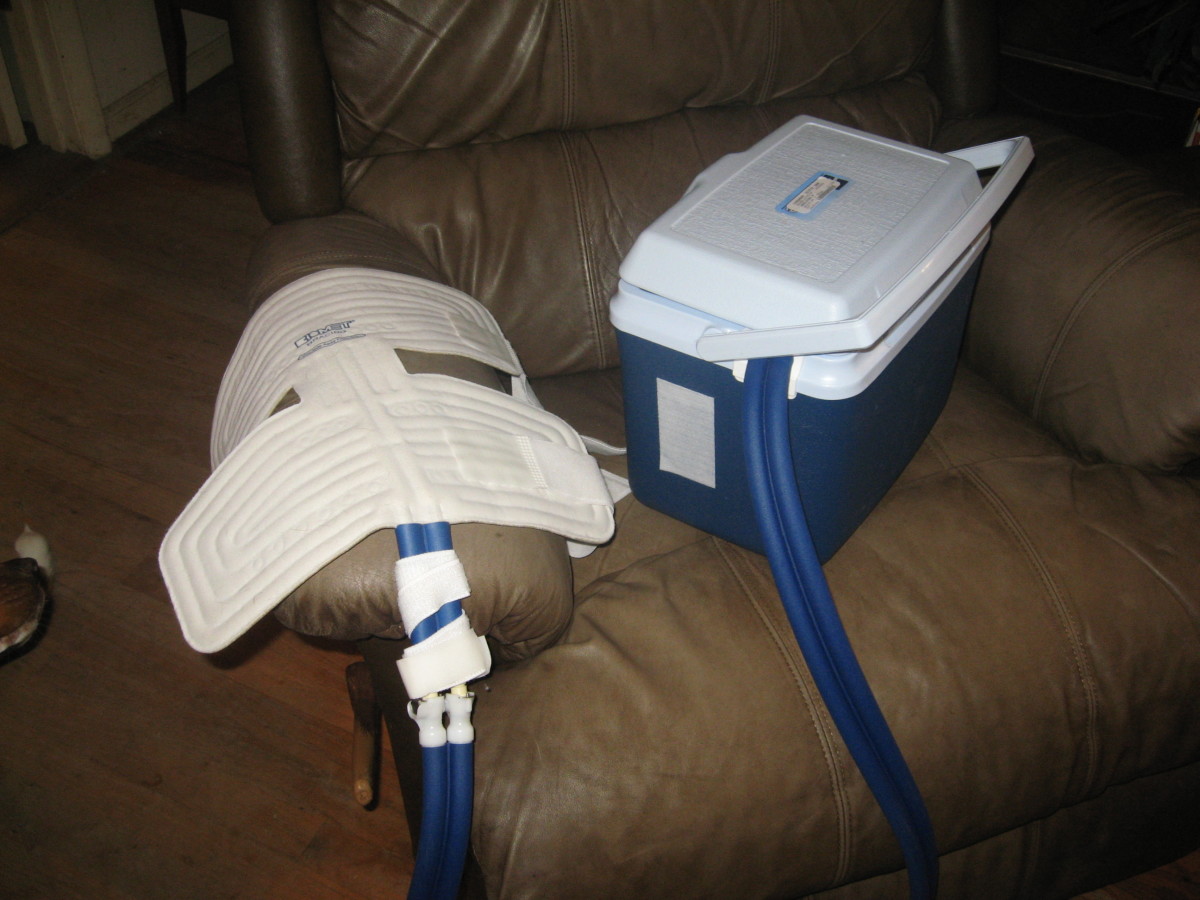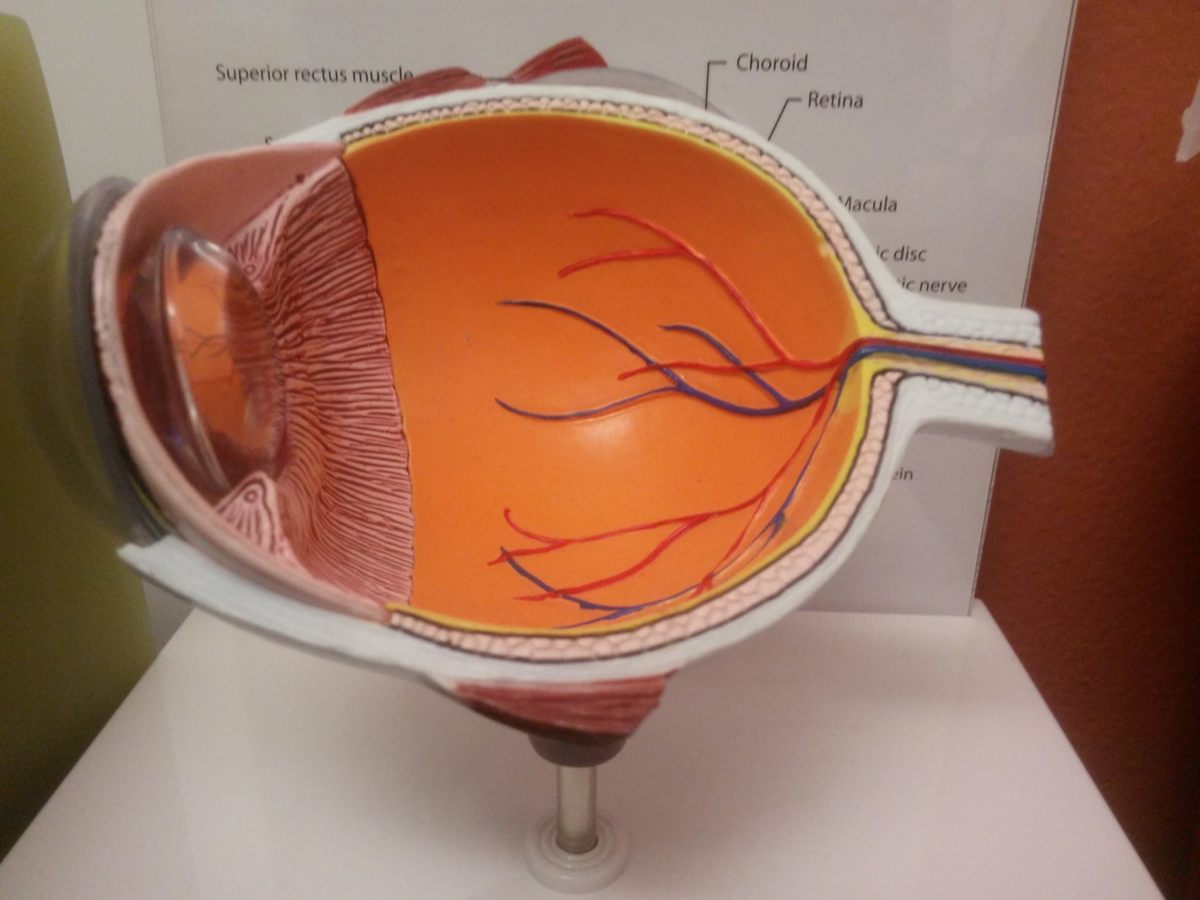General Anesthesia Side Effects - Nausea and Vomiting
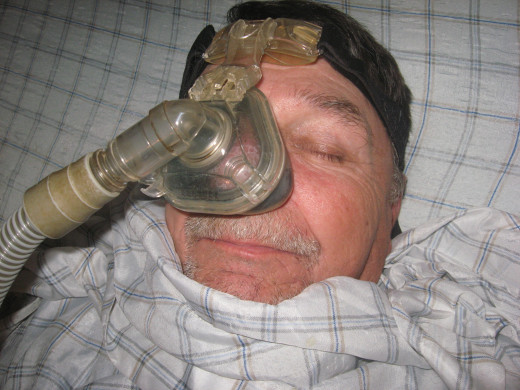
General Anesthesia
I went under general anesthesia yesterday, for knee surgery. It wasn’t open knee surgery. It was done arthroscopically, in order to repair or remove a torn meniscus. My orthopedic surgeon didn’t know whether or not he could repair the tear until he examined it with the arthroscope. I really didn’t care which strategy he used, as I was ready for knee pain relief. I wasn’t at all worried about the pain after surgery, but I was very worried about general anesthesia side effects, especially post-op nausea and vomiting (PONV). This wasn’t my first rodeo, so to speak. I had been under general anesthesia three times before, and each time I had experienced some rather unpleasant side effects of general anesthesia, in varying degrees. This latest one was definitely the worst, however. I was seriously ready to die. I hope I never have to endure anything like this again. I really can’t adequately describe to you how miserable I felt. I’m not trying to scare you. Everyone reacts differently, so your side effects from general anesthesia might be much different than mine were.

Nausea and Vomiting
I absolutely hate nausea and vomiting! I’ll choose pain over that feeling any day. I have a high threshold for pain, but I have little tolerance for nausea. Unfortunately, I’ve always gotten nauseous pretty easily. Since I was a young child, I’ve suffered from motion sickness. Riding in the back seat of a car, going on carnival rides, riding in boats, and even looking quickly from one point to another can make me sick. For example, when I was teaching, transferring grades from my grade book to my computer often made me ill. Even now, if I work too long on the computer, I sometimes end up with nausea and vomiting. The PONV I had yesterday was a thousand times worse, though.
With my background, I guess I shouldn’t have been surprised to discover my likelihood for post-op nausea and vomiting and other general anesthesia side effects. But because each post-op experience I’ve had over the years had been a little better than the previous one, I guess I expected to fare better this time. Unfortunately, that wasn’t the case, even though I followed the pre-surgery guidelines carefully. I wasn’t supposed to eat or drink anything after midnight, and I didn’t. I was even very careful not to swallow any water when I brushed my teeth that morning. I didn’t take my usual aspirin the night before surgery, either.
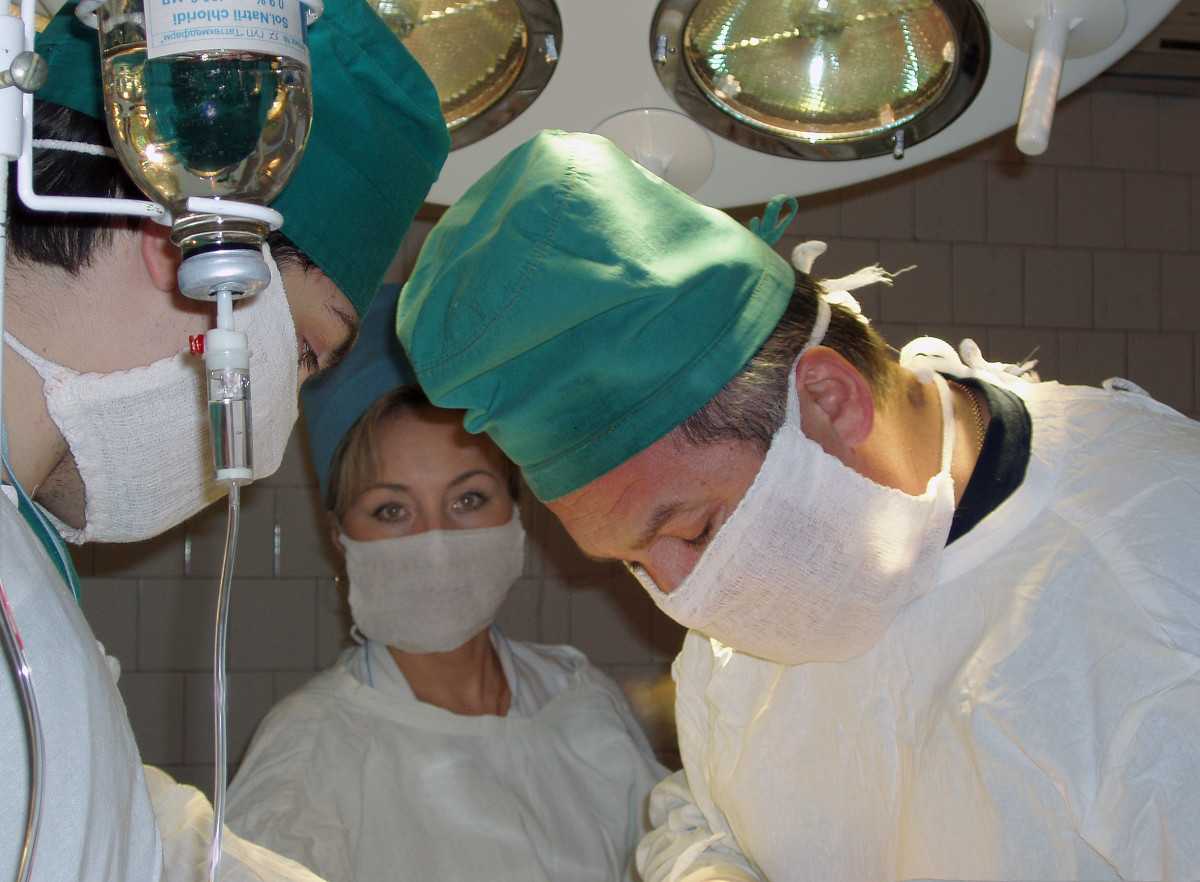
General Anesthesia Side Effects
The first time I was put to sleep, no one told me about general anesthesia side effects. That surgery was done to remove a damaged vein from my left leg. I was a little concerned about “going under” the first time, as I guess most people are. I’m sure you’ve heard some of the horror stories about patients who never wake up or who wind up in a vegetative state. I personally knew a man who underwent general anesthesia for toe surgery, and something went wrong. He never really woke up and lived the rest of his life in a wheelchair, unable to speak, walk, or do anything for himself. Since it was my first time, I had no way of knowing how my body would react to general anesthesia.
When I was coming out of the anesthesia for that surgery, I was very sick. I kept telling the nurse I had to throw up, but she told me I didn’t. She instructed me to count backward from 100, so I did. That didn’t help. I told her again and again that I had to vomit, but she kept trying to “talk me through it” instead of giving me a basin to throw up in. Finally, I threw up on her. The nausea was pretty extreme for thirty minutes or so before gradually diminishing. I was told that if I ever had to be put to sleep again, I needed to tell the surgical team about my reaction to general anesthesia so that they could give me something to counteract the nausea and vomiting.
A few years later, I had to have my gall bladder removed, under general anesthesia. This time I told the nurses about my reaction to the anesthesia, so they gave me anti-nausea medications. That time, I actually woke up in the operating room. Thank God the surgery was over! I immediately had to throw up. One of the OR nurses was a former student. When I told him I had to vomit, he immediately gave me a plastic container, and I made a deposit. After that, I was okay, so I figured the meds they’d given me for nausea and vomiting had done their job.
The third time I was put to sleep was for a bone marrow biopsy and aspiration. I didn’t want to be put completely under for the procedure, but my oncologist insisted because of where the biopsy would be done and because of the hardness of my bones. Again, I was given anti-nausea drugs prior to and during surgery. When I woke up in the recovery room, I had no nausea at all.
The most recent time I was given general anesthesia was yesterday, for meniscus surgery on my right knee. My biggest concerns involved post-op nausea and vomiting. Yes, I told the anesthesiologist all about my former experiences, and he assured me I’d be given the proper preventive measures. They didn’t work. I was sicker than I’d ever been in my entire life. Seriously, I wanted to die and would have paid someone to kill me. The general anesthesia side effects I experienced included severe nausea and vomiting, dizziness, restlessness, and agitation. I was also very hot all over. None of the nausea remedies seemed to work, either.
Some people have other general anesthesia side effects in addition to or instead of PONV. These can include dry mouth, chills, shivering, confusion, and drowsiness. You might also have a sore throat or be hoarse because of the breathing tube that was probably used. Fortunately, I’ve never had any soreness or hoarseness due to anesthesia, but I’d gladly have them instead of PONV!

Nausea Remedies
What nausea remedies were used with this surgery? I think they tried just about everything. Before surgery, Famotidine was added to my IV, and a scopolamine patch was placed behind my right ear. Before and during surgery, Zofran was delivered via my IV line. You’d think with this triple whammy, post-op nausea wouldn’t be a problem, but it was – a BIG problem!
The nurses were concerned about and empathetic to my suffering. I’d been given the maximum safe amounts of Famotidine and Zofran, so they couldn’t give me more. Evidently, the scopolamine patch hadn’t helped at all. In fact, I wonder if it didn’t make things worse. I’d never used a patch before, and I’d never been this sick after surgery. I’d never been dizzy or had the “on fire” feeling before, either, from general anesthesia, so I blamed the scopolamine patch for those symptoms. I had a nurse remove the patch in the recovery room.
When they realized how sick I was, the nurses tried a couple of other nausea remedies. I remember being asked to try to swallow some liquid medication, but I couldn’t keep it down. At that point, they used a phenergan suppository. I don’t know how long that’s supposed to take to work, but it certainly didn’t take effect quickly. When the worst of the nausea and vomiting had passed, I asked for some Coke. Coke and other cold carbonated beverages had been good nausea remedies for me before, so I was hoping it would work this time. Believe it or not, they were out of Coke and Pepsi, so they offered me some ginger ale, and I took it. Not only was I able to keep it down, it actually seemed to make me feel much better.
I’d read that ginger is one of the best natural remedies for nausea, so maybe that’s why the ginger ale helped. I don’t know if it’s the drink that did the trick or not. It could have been the timing. Maybe by the time I drank the cold drink, the general anesthesia side effects were beginning to wear off, or perhaps the other nausea remedies that had been used were finally kicking in. I’m just glad something finally worked!
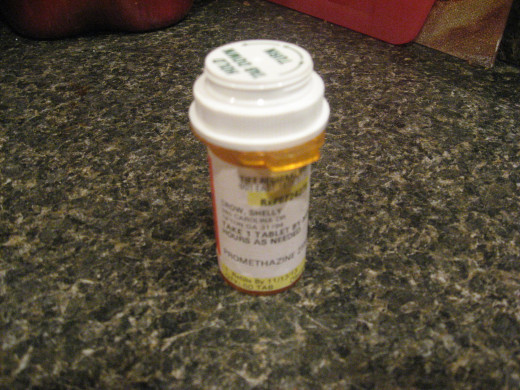
Pepcid – Famotidine
You’ve heard of Pepcid. It’s the brand name for oral famotidine. The famotidine I’ve been given for post-op nausea, however, was different. It was a liquid that was delivered via IV. The drug helps reduce the amount of acid produced by the stomach and is often prescribed in its oral form for patients who suffer from peptic ulcer or from acid reflux. Lower oral doses can be purchased over the counter.
Side effects of Pepcid and famotidine can include dizziness, diarrhea, constipation, and headaches. Long term use might cause food allergies. I’ve never experienced any side effects from this drug before, and I don’t think the ones I suffered yesterday had anything to do with the famotidine I’d been given.
Scopolamine Patch
This was the first time I had ever used a scopolamine patch, and it will most likely be the last. Scopolamine is derived from plants in the nightshade family and is used for several purposes. It acts as a mild sedative and is also sometimes used to treat bipolar disorder and depression. It has the ability to help patients forget trauma of surgery, too. The drug is often used to prevent motion sickness, nausea, and vomiting.
What are the side effects of a scopolamine patch? Scopolamine side effects vary from person to person. Some that have been reported include hallucinations, blurred vision, eye pain, terror, strange thoughts, dizziness, agitation, unusual behavior, confusion, and unusual sensitivity to light. After wearing the patch, I became very agitated and restless and was dizzy. Of course, the dizziness added to the nausea and vomiting I was experiencing. I firmly believe the patch made my post-op nausea worse instead of better.
Zofran
I’ve been given Zofran several times, delivered via IV for PONV. As you already know from the information presented, sometimes it worked better than others. The main purpose for this drug is to prevent nausea and vomiting caused by general anesthesia, chemotherapy, and radiation. Zofran is also available in tablet form for oral administration.
Zofran is the brand name for ondansetron, a serotonin receptor antagonist. How does Zofran work? It affects the central and peripheral nerves, especially the vagus nerve. The vagus nerve controls the vomiting reflex and the feeling of nausea. It’s usually safe, but it does have potential side effects, including headaches, constipation, anxiety, shivering, lightheadedness, breathing problems, and vision problems. Ondansetron might also cause confusion, an inability to concentrate, and an inability to make decisions.
Phenergan
I’ve taken phenergan several times over the years. Sometimes it worked, and sometimes it didn’t. One of my physicians told me that it works well as nausea prevention, but it’s not always effective as a nausea cure. In other words, if you take phenergan before you might get sick, it usually helps, but if you wait to take it until after you’re already experiencing nausea and vomiting, the prospects are rather “iffy.” From my experiences with the drug, I’d agree with my doctors.
Phenergan is the brand name for promethazine, an antihistamine that works as a sedative, as an antiemetic, and as a prevention for motion sickness. This drug has many uses. It’s given to treat allergies, to decrease the nausea and vomiting associated with pregnancy and general anesthesia, to help relieve the symptoms of migraine headaches, to prevent motion sickness, to help calm coughing, and as a pre-op sedative. Sometimes it’s given with narcotics to help prevent the nausea that’s often associated with opioids.

General Anesthesia – other options
Because of my past experiences, I was worried about general anesthesia side effects. I asked my surgeon if he could do the meniscus surgery with local anesthesia, but he said he couldn’t. When I met with the anesthesiologist the day before my surgery, I talked to him about my options. What could I have other than general anesthesia? He told me my only option was spinal anesthesia, or epidural anesthesia. I’d had epidural anesthesia when I was having my first child, and I wasn’t impressed. It worked great – on one side. The other half of my body wasn’t affected at all. Of course, that was back in 1977, when the procedure was somewhat new for childbirth. My daughters had had epidural anesthesia during labor and delivery, and they all had great experiences. Maybe I should give it another try? At least I wouldn’t have to worry about general anesthesia side effects.
I discussed spinal anesthesia with the anesthesiologist. I knew how epidural anesthesia worked. An area of my lower back would be numbed, and a small catheter would be placed in the epidural region of my spine. The catheter would be left in place in case I needed more medication during the procedure. With spinal anesthesia, the numbing medication would go directly to my spinal fluid. My surgeon wasn’t exactly sure how long the procedure would take until he viewed my knee with an arthroscope, so spinal anesthesia wasn’t really an option. I had to choose between general anesthesia and epidural anesthesia.
As I said, I didn’t completely trust this type of anesthesia, based on my former experience. I was told that because I’d been on long term aspirin therapy, this type of anesthesia would carry extra risks. I also remembered having a terrible headache the last time, along with being numb and unable to walk for several hours. My goal for my knee surgery was to get out of the hospital and return home as quickly as possible, and the anesthesiologist said that objective would be best achieved with general anesthesia.
I would have had another option to general anesthesia if I’d had my knee surgery in my surgeon’s surgery center. There, they offer sedation as an option. With this type of anesthesia, I’d be given the same drugs used with general anesthesia, but I wouldn’t get enough to put me completely under. Along with the sedation, a local anesthesia would be used. That sounded good to me, but my health insurance carrier wouldn’t approve for my procedure to be done in my doctor’s surgery center. They’d pay for the surgery only if it was done in the hospital, so I had no choice in this matter, and the hospital didn’t offer sedation for meniscus surgery. As you already know from my report on general anesthesia side effects, I chose general anesthesia.

